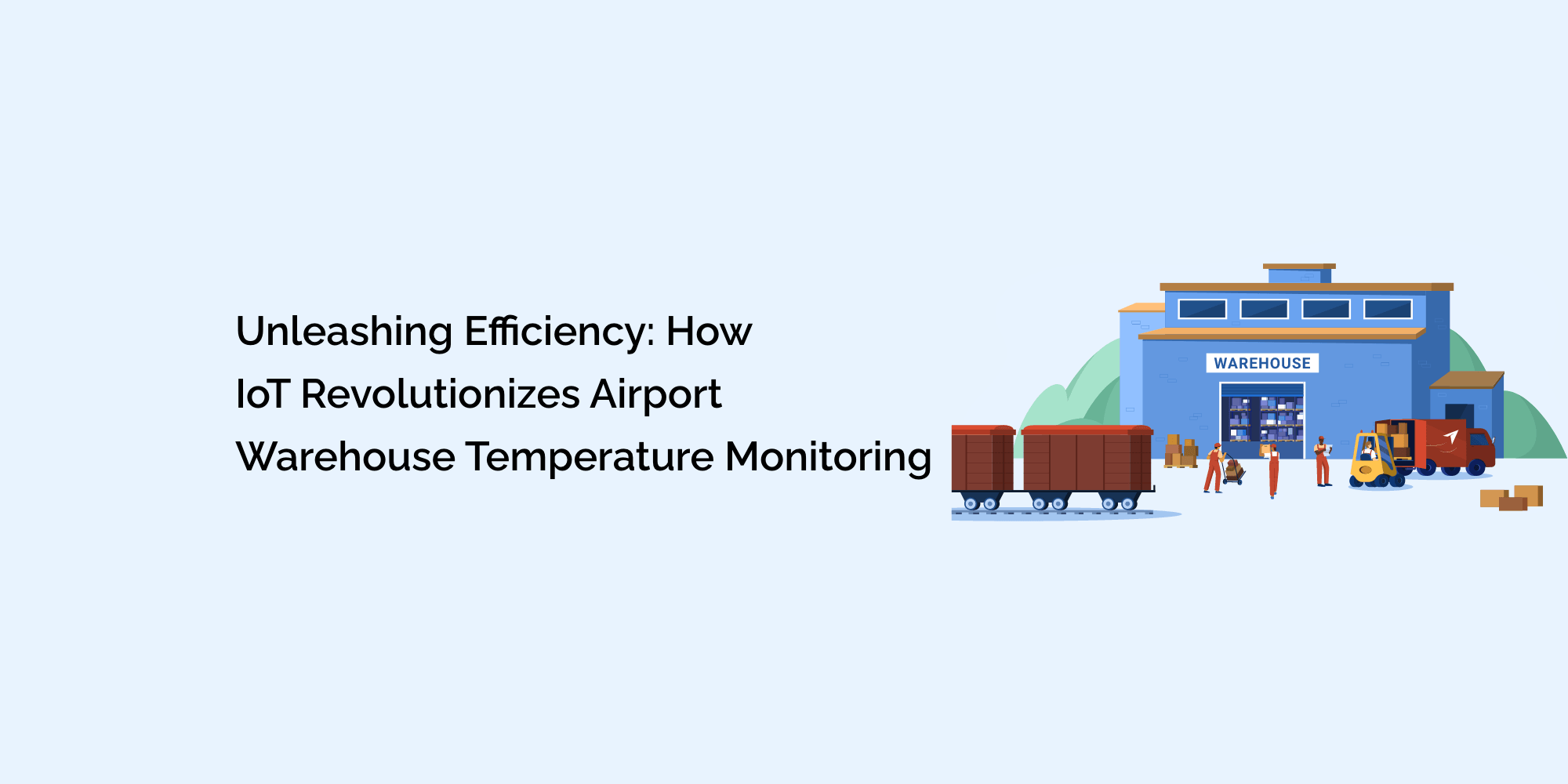In today's rapidly evolving world, airports are not just busy transit points for passengers; they also serve as crucial hubs for the global movement of goods. Behind the scenes, airport warehouses play a pivotal role in ensuring the seamless flow of cargo, making efficient temperature monitoring of utmost importance.
In recent years, the Internet of Things (IoT) has emerged as a transformative force, revolutionizing various industries, including airport logistics.
This comprehensive blog explores how IoT is reshaping airport warehouse temperature monitoring, unlocking unparalleled levels of efficiency, accuracy, and cost-effectiveness.
-
The Significance of Temperature Monitoring in Airport Warehouses
Airport warehouses serve as vital links between suppliers, airlines, and consumers. These facilities handle a diverse range of goods, from perishable items like pharmaceuticals and fresh produce to temperature-sensitive commodities.
Maintaining optimal temperature conditions throughout the storage and transportation process is crucial to preserving product quality and adhering to regulatory standards. However, traditional temperature monitoring methods often fall short in providing real-time data, leading to potential spoilage, financial losses, and customer dissatisfaction.
-
Understanding IoT and Its Relevance in Airports
The Internet of Things (IoT) represents a network of interconnected devices, sensors, and software that enables seamless data collection, analysis, and communication without human intervention.
IoT has found extensive applications across various industries, and airports are embracing this technology to enhance their operations significantly. Within the context of warehouse temperature monitoring, IoT offers a revolutionary approach by creating a smart and interconnected ecosystem.
-
Real-time Monitoring with IoT Sensors
At the heart of IoT-driven temperature monitoring are smart sensors. These sophisticated devices are strategically placed within the airport warehouse and cargo containers to continuously measure and record temperature fluctuations.
Unlike conventional methods that rely on manual checks or periodic data logging, IoT sensors provide real-time insights. This constant monitoring empowers warehouse managers to identify temperature deviations promptly and take corrective actions before goods are compromised.
-
Data Analytics and Predictive Maintenance
The abundance of data generated by IoT sensors opens up new avenues for advanced analytics. By harnessing this data, airport warehouses can gain valuable insights into temperature trends, identify potential issues, and even predict anomalies.
These predictive capabilities enable proactive maintenance, reducing downtime and generating cost savings in the long run. Furthermore, leveraging historical temperature data through predictive analytics can optimize warehouse layout, allowing for better temperature distribution and maximizing storage capacity.
-
Enhanced Security and Regulatory Compliance
IoT-enabled temperature monitoring not only improves efficiency but also strengthens security and regulatory compliance. In the event of any temperature breaches or discrepancies, the system can trigger immediate alerts to relevant personnel, ensuring swift intervention.
Additionally, IoT solutions seamlessly integrate with existing warehouse management systems, streamlining data recording and reporting for compliance with industry standards and regulations.
-
Cost Savings and Sustainability
Embracing IoT technology for temperature monitoring can lead to substantial cost savings. By minimizing product spoilage and losses, airport warehouses can operate more efficiently and reduce waste. Moreover, optimized temperature control translates into reduced energy consumption, contributing to a more sustainable and eco-friendly operation.
-
Seamless Integration into Existing Infrastructure
One of the key advantages of IoT solutions is their ability to integrate seamlessly into the existing infrastructure. Airport warehouses often have established systems in place, and the implementation of IoT for temperature monitoring does not require significant infrastructure changes. This adaptability ensures a smooth transition and quick adoption of the new technology.
-
Addressing Challenges and Security Concerns
As with any technological advancement, IoT implementation comes with its own set of challenges and security concerns. Data privacy, network vulnerabilities, and potential cyber-attacks must be addressed comprehensively to safeguard sensitive information and ensure uninterrupted operations.
Conclusion
The Internet of Things has emerged as a powerful force in revolutionizing temperature monitoring in airport warehouses. By providing real-time data, predictive insights, enhanced security, and cost savings, IoT enables airport logistics to operate at peak efficiency, ensuring the timely delivery of goods and preserving product quality.
As technology continues to advance, we can expect further innovations in the IoT space, unlocking even more opportunities to optimize airport warehouse operations and improve the global movement of goods. Embracing IoT is not just a choice but a necessity for airports looking to stay competitive in the ever-evolving landscape of logistics.








